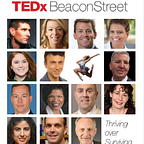Hacking the Nutrition Label
Do you know what’s in your food?
by Chunming Liu, Laurent Adamowicz, & Erin Rubin
What’s your breakfast routine?
You might have a favorite cereal that you rely on each day: it’s tasty, it’s quick to prepare, and the label says reassuring things like “low fat” and “whole grain.”
Americans love processed food for its convenience, addictive taste, and omnipresence. Even the packaging is enticing, listing all the ways the manufacturers care for your health.
Have you ever wondered what makes boring things like whole grains and oats so hard to resist? If we’re primed to love sugar and fat, we shouldn’t love plain old wheat flakes.
People say it’s “processed” food, but what does that really mean? What really happens in those factories?
“Processed” food actually means a whole lot. The color, texture, and taste of processed food is dramatically changed from the food’s original state. Sometimes it’s easy to tell; nobody thinks ketchup ought to be purple. But we as a culture are so desensitized to the flavors of processed food that we don’t realize how much added sugar it contains — so we don’t realize how much sugar we’re eating. That’s what makes the difference, and that’s what creates the addiction.
Intense sweetness was proven to be more addicting than cocaine back in 2007. [1] An experiment from the University of Connecticut comparing consumption of Oreo cookies and cocaine found that cocaine and sugary or fatty foods have similar ways of stimulating the brain. [2]
You might think, “Yeah, but I’m not addicted to Oreos; they’re a ‘sometimes food.’ I don’t really eat that much processed sugar!” Unfortunately, you’re probably wrong.
Look again at the labels on your food, like the one pictured here; how many of those words do you really know?
Why is this list so long?
Well, there are 10 ingredients on this list that represent one thing: Added Sugar!
By law, ingredients on nutrition labels are listed in order of proportion, from most to least. To avoid admitting the amount of sugar present in their food, companies use specific names for different types of sweeteners that each appear in smaller amounts. But hiding things down the label doesn’t change the healthfulness of the product.
To test yourself; look at the label pictured; can you identify the ten types of sugar? (See the answers below.)
Bonus points: Can you guess what food this label comes from?
Added sugar, also known as secondary sugar, is present in 74% of packaged food, and goes by over 50 different names. [3][4]
Did you pick “Maltodextrin” out from the label pictured? It sounds like a preservative, right? Labels can be tricky.
Here’s the other tricky part: How much is a gram? If you cook with American recipes, you measure ingredients like sugar in teaspoons and tablespoons, not metric weights. Listing ingredients in grams distances consumers just a bit more from a real understanding of what’s in their food.
Here’s an easy way to think about added sugar when you’re comparing labels in the grocery store:
4g =1 teaspoon
So when you’re looking at a cereal label and it says 17g of sugar per serving, imagine heaping four teaspoons full of sugar and popping them in your mouth. Is that really how you want to start your day?
Urgent Need for Clearer Added Sugar Labeling
Laurent Adamowicz has been a food industry expert for decades, and he recognized this problem early on. In his TEDxBeaconStreet talk, Laurent pointed out how much sugar is hidden in everyday items like baby formula and salad dressing.
The thing is, most of us aren’t food-industry experts. We won’t remember 50 names for sugar every time we go to the store. We want to eat healthy, but conscientious grocery shopping is actually a lot of work, and even with the best of intentions, we won’t always put in that work when we’re on our last-minute run to Trader Joe’s after a long day of work.
Laurent decided to target the place on the food chain where innovation could have the biggest impact: making it easy for buyers to make informed choices about their food.
He decided to hack the nutrition label.
This work proceeds on two fronts.
The EChO Foundation (Eradicate Childhood Obesity Foundation) aims to create clear added sugar labeling using teaspoon measurements, to reveal the total amount of added sugar in the entire package. A petition called “Front Label Act” calls on Congress to mandate clearer labeling for added sugar, and has attracted many health enthusiasts.
While we wait for Congress to act, more direct action is needed. EChO aims to work on the META platform to make an augmented reality headset that can tell consumers instantly how much sugar is really in their food.
That’s right: the augmented reality of nutrition is here!
Or rather, it’s coming. The EChO Foundation needs YOU.
If you’re a coder or developer and you want to make the world a healthier place, then EChO wants your help. Imagine if you could look at the real nutrition facts of a particular food product just by tapping a button; what would be the impact on your health? Help EChO find out.
By the way: That sugary label we saw up above?
It’s Cheerios.
References:
1. Lenoir M, Serre F, Cantin L, Ahmed SH. Intense sweetness surpasses cocaine reward. PLoS One. 2007;2(8):e698. doi: 10.1371/journal.pone.0000698 [doi].
2. Student-faculty research suggests Oreos can be compared to drugs of abuse in lab rats. (n.d.). Retrieved February 15, 2017, from https://www.conncoll.edu/news/news-archive/2013/student-faculty-research-suggests-oreos-can-be-compared-to-drugs-of-abuse-in-lab-rats.html#.WKSCI3eZPMV
3. Ng, S.W., Slining, M.M., & Popkin, B.M. (2012). Use of caloric and noncaloric sweeteners in US consumers packaged foods, 2005–2009. Journal of the Academy of Nutrition and Dietetics, 112(11), 1828–1834.e1821–1826.
4. Lustig, R. (2013). Sugar Has 56 Names: A Shopper’s Guide (A Penguin Special from Hudson Street Press) (1st ed.). Avery.
